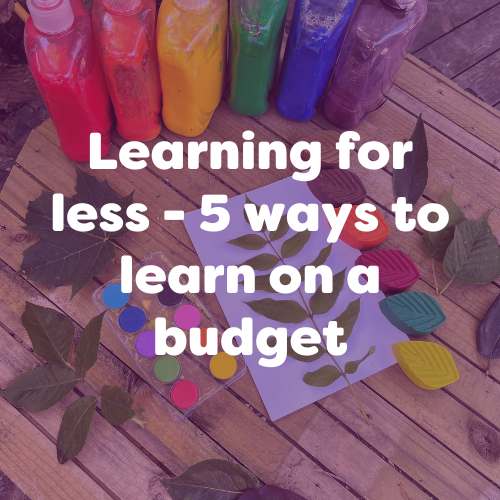This blog was written in collaboration with Samantha (@homeplayexplore) and Danie (@the_little_adventurer), EYR Brand Ambassadors, parents to young children and nature enthusiasts. In this blog they share some of their favourite activities with their children that support early learning and do not break the bank.
Budget cuts and economic difficulties have led to many schools cutting back on their children’s learning opportunities. Educators often find that learning resources are expensive and can’t afford them. While there may be higher-tech ways to educate your children at home, you don’t necessarily need expensive materials to give your child quality education. This post will show you how using everyday household items can provide quality learning opportunities for your child on a budget.
1. Colour Hunt
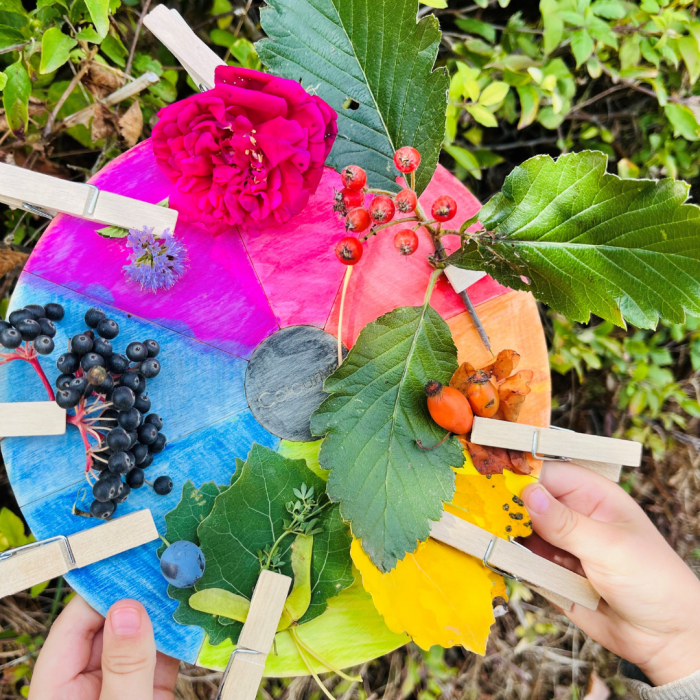
Danie from @the_little_adventurer suggests going to a local forest or park, anywhere with open space, trees and flowers, to look for what colours you can find. For this simple budget friendly activity, all you need are:
- A colour wheel
- Pegs
- A picnic and a warm drink if it’s chilly!
Take your colour wheel and simply clip your nature finds to the colours!
This activity costs nothing to do and you can make your own wheel or take a little basket to collect your colours in. It also encourages your little ones to stop and appreciate nature, look at the surroundings and take a closer look at all the small things that would normally be missed.
You could also add small variations on this activity. For example by doing a seasonal colour hunt. What can you find in autumn compared to summer, spring or in winter? Or explore other areas like the seaside, what colours can we find here versus the park?
2. Leaf Printing
Another budget friendly activity Danie loves to do is leaf printing. This is the perfect excuse to get outside, collect some nature treasures, and provides you with two activities in one.
There are a number of ways you can make leaf prints. Here are some of Danie’s favourites:
- Paint the skeleton side of the leaf and stamp on paper or card
- Place the leaf on paper and use watercolours to paint around the leaf
- Place the leaf under paper, skeleton side up, and use wax crayons to rub over the leaf gently
- Print the leaf onto fabric by hammering with a stone or a mallet
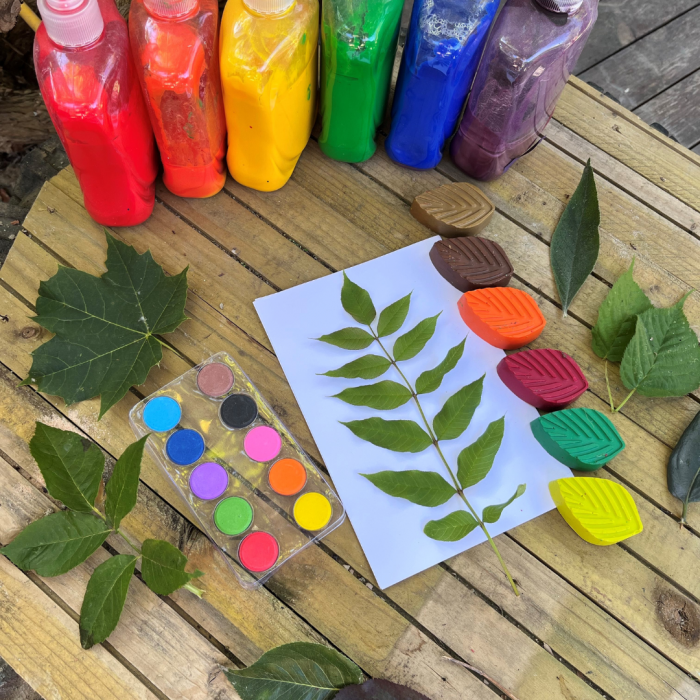
3. Homemade Playdough
Why not make your own playdough and give your little one an activity that keeps on giving! It’s a great way to bond together, follow instructions, and has a little sneaky maths thrown in for good measure! Playdough can be used in small world play, used as a learning resource, or in open ended play. Give your child a tray of loose parts and dough and you’ll have peace for a good hour or so! You will need:
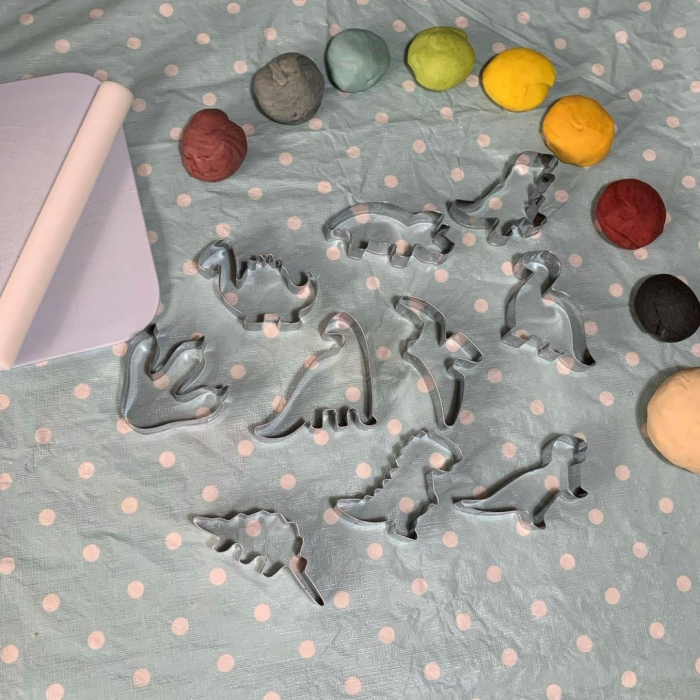
- 192g Plain Flour
- 64g Table Salt
- 2 tbsp. Cooking Oil
- 2 tbsp. Cream of Tartar
- 250ml Boiling Water
- Food Colouring (Optional)
Method
- Mix together the flour, salt, oil and cream of tartar in a bowl
- Add your chosen food colouring to the hot water. Add the liquid to the dry ingredients and mix
- You should get a smooth texture that is ready to knead on a floured surface – if not, add more flour to the mixture
- Your dough is now ready to play with! When you’re finished playing, store in an airtight container for another play day.
4. Sensory table
A sensory table is a great way to engage children in their environment. It is a low-cost, easily accessible tool that can be used by many different people and at various developmental stages. Sensory tables are often filled with items such as mini figurines, blocks, sand, water beads, rice or other grains and even ice cubes. The idea behind the sensory table is to provide an area where children can explore materials while they sit down on the floor. This type of activity helps develop motor skills and hand-eye coordination as well as promote creativity.
Sensory tables help students learn new skills such as sorting, comparing, stacking and more. They also provide opportunities for self-expression by allowing students to create art projects with materials like paint or clay on the tabletop surface.
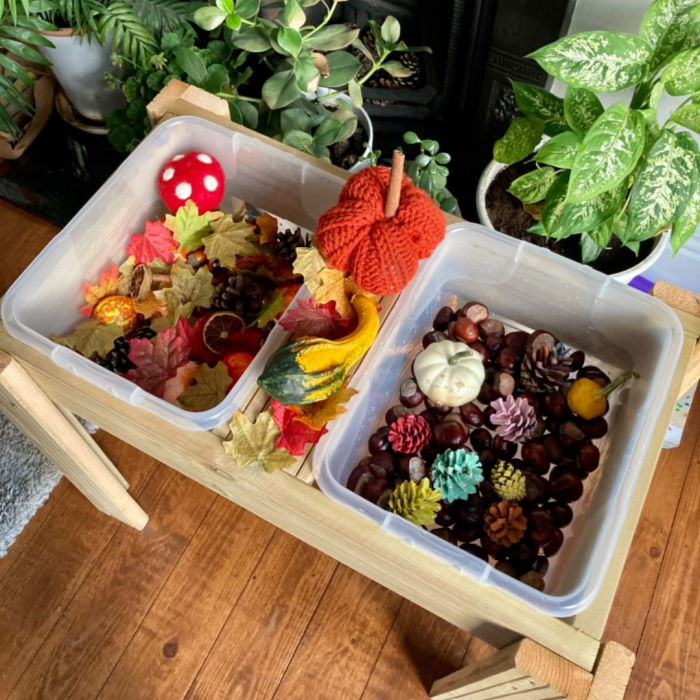
5. Loose parts play
Tyres and wooden planks are super versatile resources which can be used for so many different activities. Create an obstacle course, build a vehicle, or even use the tyres as mud kitchen stands. The list goes on!
Samantha from @homeplayexplore made an obstacle course using planks and tyres, but an obstacle courses can be made by using anything from benches, chairs, boxes to anything else you can find in your setting. Give the obstacle course different levels of difficulty so different age groups can enjoy themselves.
See where your imagination takes you, and see what you can do with planks and tyres!

What are your favourite tips for budget-friendly learning in your setting? Share your ideas with us on social media by tagging us and by using the hashtag #ExploreWithEYR.

